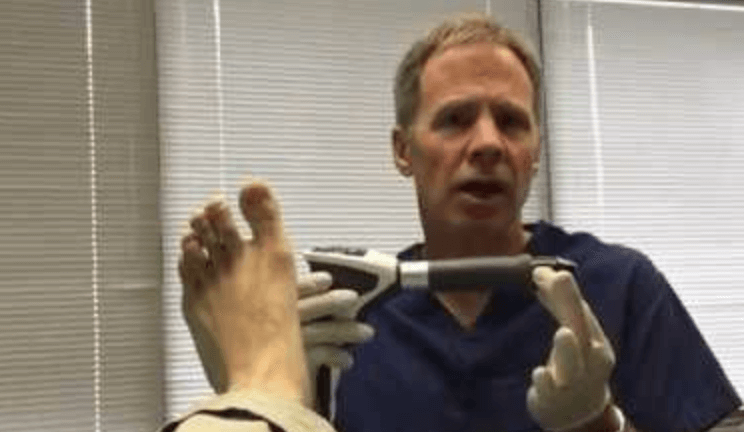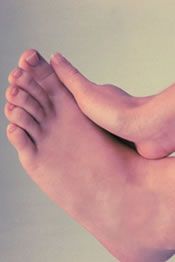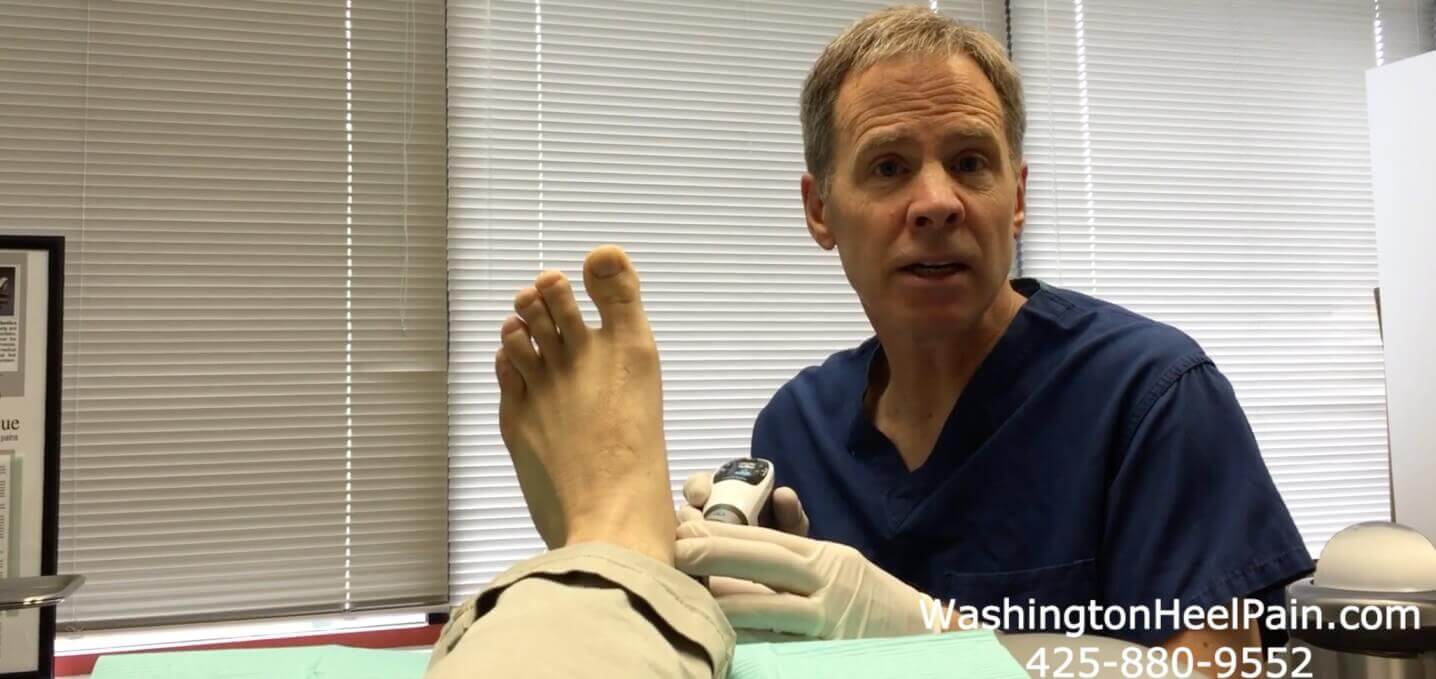shockwave therapy
Displaying items by tag: shockwave therapy
Dr. Timothy Young Discusses Shockwave Therapy for Achilles Tendonitis: A Promising Treatment Option
Introduction
Achilles tendonitis is a common and painful condition that affects the Achilles tendon, the thick cord that connects the calf muscles to the heel bone. This condition often results from overuse or repetitive stress, causing pain, swelling, and stiffness in the back of the ankle. While conservative treatments like rest, physical therapy, and anti-inflammatory medications can help manage Achilles tendonitis, some cases may require more advanced interventions. Shockwave therapy is one of the newer treatment options for resistant Achilles tendonitis.
In this blog post, I will discuss what shockwave therapy is, how it works, its benefits, and its effectiveness in treating Achilles tendonitis.
What is Shockwave Therapy?
Shockwave therapy, also known as extracorporeal shockwave therapy (ESWT), is a non-invasive medical procedure that uses high-energy acoustic waves to stimulate healing and tissue repair. Originally developed to break down kidney stones, this technology has found its place in sports medicine, offering a promising alternative for various musculoskeletal conditions, including Achilles tendonitis.
How Does Shockwave Therapy Work?
Shockwave therapy works by delivering high-energy sound waves to the affected area, creating microtrauma within the damaged tendon. This microtrauma triggers the body's natural healing response, increasing blood flow, promoting collagen production, and stimulating tissue regeneration. In the case of Achilles tendonitis, shockwave therapy targets the degenerated tissue and encourages the formation of healthy tendon fibers.
Benefits of Shockwave Therapy for Achilles Tendonitis
1. Non-Invasive: Shockwave therapy is a non-surgical and non-invasive treatment option, making it suitable for patients who want to avoid surgery or those who have not responded well to conservative treatments.
2. Reduced Pain: Many patients experience a significant reduction in pain after shockwave therapy, which can improve their overall quality of life and enable them to return to their normal activities.
3. Accelerated Healing: Shockwave therapy accelerates the natural healing process by promoting tissue repair and regeneration, allowing patients to recover faster.
4. Minimal Side Effects: Compared to surgery, shockwave therapy carries fewer risks and side effects. It generally has a much shorter recovery time and does not require a lengthy rehabilitation period.
Effectiveness of Shockwave Therapy
Numerous studies and clinical trials have examined the effectiveness of shockwave therapy for Achilles tendonitis, and the results have been promising. It is important to note that individual responses to the treatment may vary, and not all patients will experience the same level of relief.
In a typical treatment plan, patients receive multiple shockwave sessions over several weeks (typically 1X/week for 5 weeks). Each session lasts around 15-20 minutes, and most patients report improvement in pain and function after completing the recommended treatment course.
It's essential to consult with a qualified healthcare professional who can evaluate your specific condition and determine if shockwave therapy is a suitable option for you.
Conclusion
Achilles tendonitis can be a debilitating condition that hinders daily activities and sports performance. While traditional treatments have their merits, shockwave therapy offers a promising alternative for those who seek non-invasive and effective solutions.
Before considering shockwave therapy, it's crucial to consult with a healthcare provider who can assess your condition, discuss treatment options, and tailor a plan that best suits your needs. With the potential to reduce pain, accelerate healing, and improve overall quality of life, shockwave therapy may be the answer for many individuals suffering from Achilles tendonitis
If you are experiencing foot or ankle pain, give us a call today at 425-391-8666 or make an appointment online.
Dr Timothy Young reviews Shockwave Therapy: The Ultimate Solution for Stubborn Plantar Fasciitis

Dr Timothy Young reviews Shockwave Therapy: The Ultimate Solution for Stubborn Plantar Fasciitis
Introduction
Plantar fasciitis is a painful and persistent condition that can severely impact one's quality of life. Characterized by intense heel pain, especially during the first steps in the morning or after prolonged periods of rest, it's a condition that affects millions of people worldwide. While there are various treatment options available, shockwave therapy has emerged as a leading choice for those struggling with stubborn plantar fasciitis. In this blog, we'll explore why shockwave therapy is often considered the best treatment for this challenging ailment.
Understanding the Frustration of Stubborn Plantar Fasciitis
Plantar fasciitis occurs when the plantar fascia, a thick band of tissue that runs along the bottom of the foot, becomes inflamed or damaged. This condition can be particularly frustrating because it often resists traditional treatments, such as rest, ice, and stretching exercises. When conservative measures fail to provide relief, individuals may face ongoing pain, reduced mobility, and decreased quality of life.
Why is Shockwave Therapy the Best Option for Stubborn Plantar Fasciitis?
Non-Invasive and Minimally Disruptive: Unlike surgical options, shockwave therapy is a non-invasive procedure. Patients can undergo treatment without the need for incisions, anesthesia, or a lengthy recovery period. This makes it an attractive option for those looking to avoid the risks and downtime associated with surgery.
High Success Rates: Numerous studies and clinical trials have demonstrated the effectiveness of shockwave therapy for stubborn plantar fasciitis. Many patients experience significant pain reduction and improved function after a series of shockwave sessions.
Stimulates Natural Healing: Shockwave therapy works by delivering high-energy shockwaves to the affected area. These shockwaves create microtrauma within the damaged tissue, stimulating the body's natural healing response. This process promotes tissue regeneration and reduces inflammation.
Quick and Convenient: A typical shockwave therapy session lasts only 15-20 minutes, and most patients can resume their daily activities immediately afterward. The procedure is typically performed in an outpatient setting, making it a convenient option for those with busy schedules.
Addresses the Root Cause: Unlike some treatments that merely mask the pain, shockwave therapy targets the root cause of plantar fasciitis. By promoting healing and reducing inflammation, it offers long-term relief rather than just temporary pain management.
Minimal Side Effects: The side effects of shockwave therapy are generally mild and short-lived. Some patients may experience temporary soreness or bruising at the treatment site, but these effects are typically minor compared to the potential benefits.
Reduced Reliance on Medications: Shockwave therapy can often reduce the need for pain medications, which can have side effects and long-term risks. This is particularly important for individuals seeking to avoid the potential downsides of pharmaceutical interventions.
Conclusion
Stubborn plantar fasciitis can be an incredibly frustrating and painful condition, but there is hope. Shockwave therapy has emerged as a highly effective and non-invasive treatment option, offering relief and improved quality of life for those who have struggled for far too long. If you've been dealing with the relentless discomfort of plantar fasciitis, consult with a healthcare professional to discuss whether shockwave therapy is a suitable treatment for you. While no treatment is guaranteed to work for everyone, shockwave therapy has proven to be a game-changer for many individuals, providing the opportunity to regain their mobility and enjoy life without the constant burden of pain. Please contact our clinic to see if this treatment is right for you. Give us a call at 425-391-8666 or make an appointment online.
Dr. Timothy Young, a Board-Certified Foot Surgeon, Discusses Shockwave Therapy For Stubborn Achilles Tendinitis and Plantar Fasciitis

Dr. Timothy Young, a board-certified foot surgeon discusses, Shockwave therapy for stubborn Achilles tendinitis and plantar fasciitis. (EPAT)
Many of our plantar fasciitis and Achilles tendinitis patients respond well to traditional therapy. This includes appropriate gym shoes, prescription orthotics, braces, a night splint and stretching.
However, some patients have more stubborn cases. In these cases shockwave therapy is highly effective. In Dr Young's experience, this can be 80–90 percent effective for patients who have not had adequate relief with the traditional treatments. There are some cases that are so severe that we also use PRP (platelet rich plasma).
The shockwave therapy is typically done once a week for 5 treatments. There is no down time with shockwave therapy and there are no injections.
The Shockwave therapy protocol includes avoiding nonsteroidal anti-inflammatories like Aleve or Advil, avoiding icing, and taking supplemental boron - 3 mg per day and collagen. The clinical improvement after shockwave can continue to progress over 3-4 months.
Shockwave therapy is a form of regenerative medicine. The shockwave therapy itself is a fairly intense treatment and the targeted tissue benefits from the shockwave therapy with increased blood flow and increased local healing factors much like other forms of regenerative medicine. The body responds to shockwave therapy such that the local tissues respond as though there is trauma and this triggers many of the bodies own natural healing.
If you are experiencing foot or ankle pain, give us a call at 425-391-8666 or make an appointment online today.
What Does Shockwave/EPAT Do?

What does shockwave/EPAT do?
We use shockwave for various conditions. For example, with plantar fasciitis the plantar fascia does not have great blood supply. So, with plantar fasciitis, shockwave is extremely effective. The body thinks it is being traumatized and this in turn stimulates additional blood flow to help the plantar fasciitis resolve. The shockwave treatment also stimulates the release of local healing factors that your body has available but aren't normally released or readily available . For example, these healing factors would be released during an injury. So again, this shockwave treatment simulates an injury but it's not creating any real trauma (just fooling the body) .
Over time, shockwave helps allow for long-term healing of the tissues, rather than just masking the problem.
If you are experiencing heel pain, give us a call at 425-391-8666 or make an appointment online today.
Dr. Young Discusses Shockwave Therapy Treatment for Plantar Fasciitis

The shockwave therapy is part of what we call regenerative medicine. Typically, 5 treatments of shockwave are done at weekly intervals. This actually helps the damaged tissue and fascia heal rather than just masking the problem. There are a number of pathways with this treatment works including improving the local blood flow to the damaged plantar fascia. The treatment also activates the local It is always critical to continue the other mechanical and supportive measures (Prescription orthotics night splint hoka shoes).
The majority of patients do very well with this protocol. A small number of patients will need an additional limited series of (3) additional shockwave treatments 4–6 months later into the treatment plan.
If for any reason there is not dramatic and 90% plus improvement then an MRI evaluation is recommended.
Give us a call at 425-391-8666 or make an appointment online today.
Shockwave (EPAT): An Extremely Effective Technique To Get Rid Of Plantar Fasciitis

If you have had plantar fasciitis you know how frustrating it can be to your everyday life. Often you wake up and have pain with your first step, and then it returns again at the end of the day or every time you sit down. You have been icing and stretching and talking to all your friends and still are not getting better.
Why, why will this heel pain not go away? The number one cause of plantar fasciitis or heel pain is overuse. The overuse begins to wear down the fibers of your plantar fascia and they become fragile and often tear. Most patients with heel pain that will not go away have microscopic tearing.
Well how do you fix this tearing? One of the most advanced and effective treatment options is shockwave therapy. It has no downtime, no anesthesia, is non-innvassive, no scarring and is fast and effective in healing the torn fascia. This is a great option for active or athletic patients. The best shockwave avaible is the EPAT or Extracorporeal Pulse Activation Technology by CuraMedix. There are a lot of other types out there but this has the best results and the most long term data. If you want to heal your fasciitis fast and with no down time this is the device.
How it works? We typically employ 5 sessions all about 1 week apart. Each session takes about 10 minutes and is pain free and can be done in the office. The shockwave, EPAT, stimulates your bodies own healing cascade to recruit new cells and a new blood supply to heal your fascia. It is so effective that most professional sports teams have a unit to treat their athletes. If you are suffering from heal pain and want to get rid of it once and for all schedule and appointment with us today. Give us a call today at 425-391-8666 or make an appointment online today.
Dr. Timothy Young Talks About Shockwave Therapy And How Long It Lasts

Shockwave therapy is one of the newer and most effective treatments for stubborn plantar fasciitis. It is also an excellent treatment for Achilles tendinitis and other tendon and musculoskeletal problems that we see. It is typical for shockwave therapy to be done anywhere from 3-5 treatments usually with 1-2 week intervals. The treatment results in progressive reduction in your symptoms over a period of 3–4 months from the onset of treatment. Once the treatment is complete most patients do not need additional treatment in this regard.
There are a few exceptions where a short mini series of 2 or 3 treatments may be done at 3 or 4 months from the start of treatment for exceptionally stubborn cases. For the majority of our patients that have this treatment they are pain-free and do not have recurrence of the plantar fasciitis symptoms for a period of years. It is important to keep doing proactive "maintenance such as making sure that you wear your orthotics, stretching your calf, and not going barefoot at home. Failure to do some of these treatments could result in recurrence of plantar fasciitis or reinjury.



